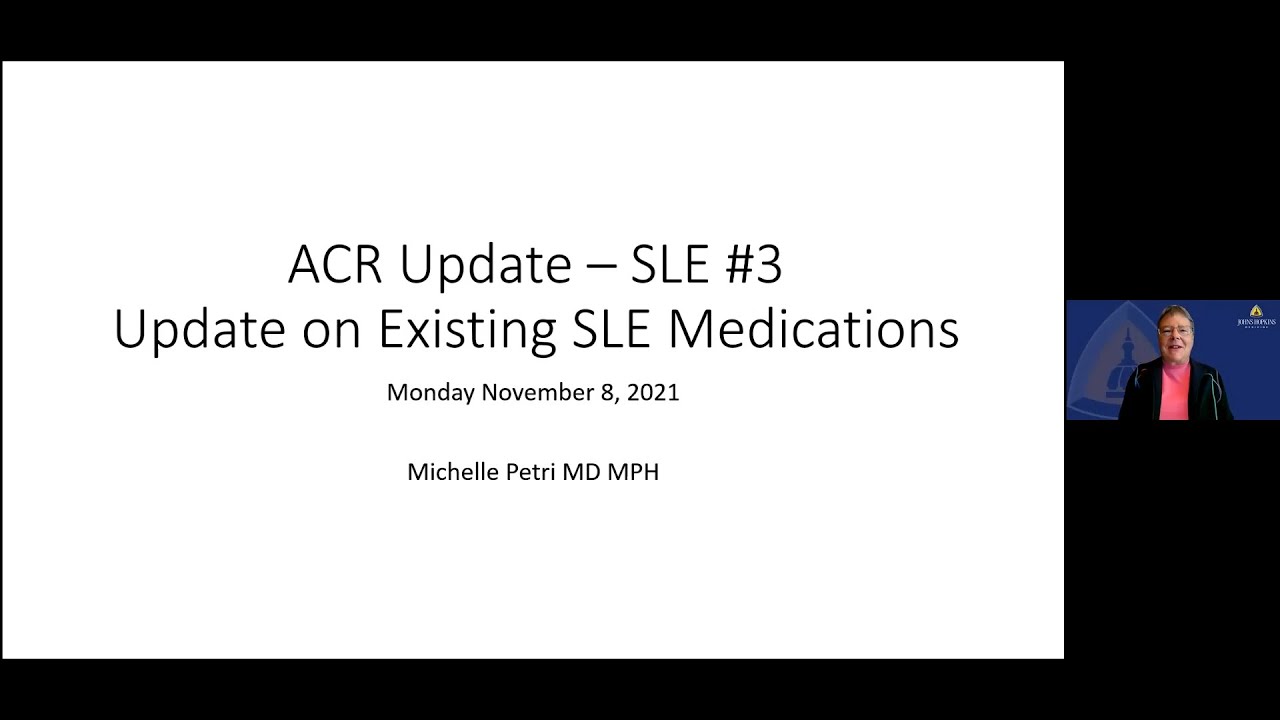My favorite three presentations from day 4 (Tuesday) at ACR 2021 included the following.
Evidence suggests that RA patients are at increased risk for cognitive impairment. This is likely mediated by certain factors, including chronic inflammation and accelerated atherosclerosis. In the clinical setting, it is important to identify RA patients at increased risk for cognitive impairment.
On the last day of ACR21 Annual Meeting, the RheumNow faculty selected these 15 as their favorite reports.
A treat-to-target strategy has been shown to improve clinical outcomes in patients with rheumatic diseases like rheumatoid arthritis, psoriatic arthritis, ankylosing spondylitis including systemic lupus erythematosus. The goal of treatment in SLE is aimed at remission or low disease activity.
Hitting the home stretch, day 3 presentations were big! Here are a few of my favorites: secukinumab efficacy in juvenile PsA; VEXAS - predicting poor outcomes; and the FDA Safety Update session.
Should we start considering therapeutic drug monitoring when prescribing TNFi for treatment of our rheumatologic conditions?
Vacuoles, E1 enzyme, X-linked, autoinflammatory, somatic syndrome (VEXAS) took the centre stage when it was first introduced at ACR20 last year. It got everyone’s thinking that they might have encountered one or two patients in their rheumatology lifetime who might have this condition. One year on, more cases have been reported and this article summarises some breakthroughs pertaining to research in VEXAS.
Traditionally telemedicine is thought to be a technology where a patient directly talks to a provider or a specialist; however, another concept of having a patient with a local primary care who in turn accesses specialists via video conferencing, is gaining some momentum.
Psoriatic arthritis is currently experiencing a burgeoning selection of treatment options. While this is a very welcome development in a disease which has had less treatment options compared to RA, it leaves us with a difficult conundrum: which agent to choose for an individual patient.
Uveitis is the most frequent extra-musculoskeletal manifestation (EAM) in Axial Spondyloarthritis (axSpA). The prevalence of uveitis in axSpA is between 25-30%. Up to 50% of patients with an acute episode of uveitis develop recurrent anterior uveitis or iritis. Being such a prevalent EAM in axSpA, we should focus on this condition. There have been some updates on uveitis in SpA at #ACR21 which I will share here.
The third day of ACR 2021 took a big leap in online content. Here is a compilation (with links) of presentations were the “ACRBest” as seen by our RheumNow faculty.
This report highlights the VITAL trial; the ORAL Surveillance Study; and the Microbiome study of monozygotic psoriasis patients.
PsA commonly affects peripheral joints. In up to a quarter of PsA patients, the spine may be involved and this is known as psoriatic spondylitis (PsSpA). An important research question is whether PsSpA and Axial Spondyloarthritis (AxSpA) with psoriasis are separate conditions or not.
Differentiation between a flare of disease and infection in patients with autoinflammatory (AI) conditions, where fever is the hallmark, can be extremely difficult. Few studies have evaluated potential differentiators; and having such tools would meet a huge unmet need.
Methotrexate may be a rheumatologist’s best friend, but a key part of counselling any patient about its use has always been the risk of hepatotoxicity. Despite methotrexate’s near-ubiquitous use in rheumatology, and the consequent frequency of patient counselling about it, relatively little is known about what precautions are absolutely required, a situation which might otherwise provoke anxiety for patients.














































 Poster Hall
Poster Hall